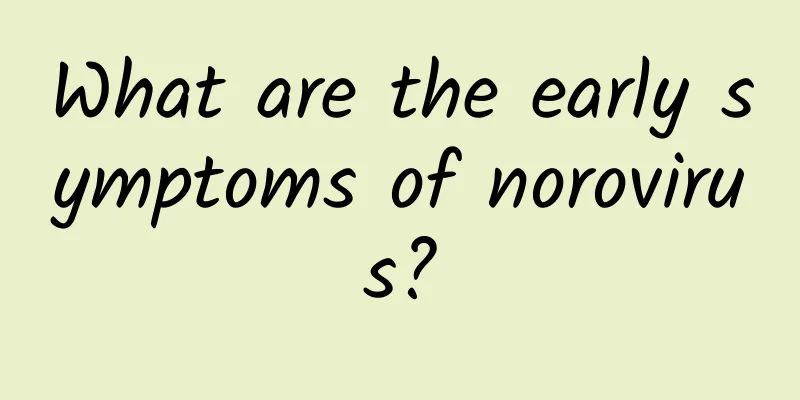What are the early symptoms of norovirus?

|
Norovirus is a virus that causes non-bacterial acute gastroenteritis. The onset is sudden and often presents with symptoms such as fever, nausea and vomiting, or cramping abdominal pain and diarrhea. Therefore, patients must pay attention to early detection and active treatment. 1. What is Norovirus? Norovirus, also known as pyocyanin virus, is a virus that causes non-bacterial acute gastroenteritis. Can be abbreviated as NV. The most common symptoms of norovirus infection are diarrhea, vomiting, nausea, or fever, headache and other symptoms. Vomiting and nausea are common symptoms in children, while diarrhea is more common in adults, with vomiting being rare. The course of the disease is generally 2-3 days. This disease is a self-limiting disease with no sequelae after recovery. Norovirus-induced diarrhea is prevalent worldwide and can occur throughout the year. The main targets of infection are adults and school-age children, with a higher incidence in cold seasons. The virus is widely distributed around the world. Data show that the detection rate of Norovirus is about 15% among children under 5 years old with diarrhea in China. Serum antibody level surveys show that Norovirus infection is also very common in the Chinese population. 2. Norovirus symptoms 1. Time of onset: The incubation period is 24-48 hours, generally not exceeding 96 hours. 2. Disease progression The clinical manifestations are similar to those of other viral gastroenteritis, with a sudden onset and the main symptoms being fever, nausea, vomiting, crampy abdominal pain and diarrhea. Vomiting or diarrhea may occur alone, or vomiting may occur first and then diarrhea, so it is also called Norovirus infectious diarrhea. Diarrhea is more prominent in adults, while vomiting is more common in children. The stool is yellow, watery and occurs several to dozens of times a day without pus, blood or mucus. It may be accompanied by low fever, sore throat, runny nose, cough, headache, myalgia, fatigue and loss of appetite. Patients with a long course of illness or severe conditions also take longer to detoxify, and the infectiousness may continue until two days after the symptoms disappear. The immune period of this disease is short and infection can occur repeatedly. 3. Norovirus infection test Laboratory examination showed no abnormalities in routine stool examinations, and no pathogenic bacteria grew in culture. Immunoelectron microscopy of the stool 24-48 hours after onset of the disease may reveal viral particles. |
<<: What is the TCM treatment for lower limb edema?
>>: What is the best way to treat norovirus?
Recommend
What causes pain in the middle of the foot?
Sometimes, when we walk, we find pain in the midd...
What to do if your spleen and stomach are not in harmony and your breath is bad? Dietary treatment to remove bad breath
Inharmonious spleen and stomach can cause problem...
Acute icteric hepatitis
When it comes to hepatitis, many people may panic...
Effects and efficacy of Chinese medicine Gardenia jasminoides
Yellow Gardenia is the name of a Chinese herbal m...
What are the dangers of bile duct polyps?
Biliary polyps are a relatively common disease. S...
How to treat ankle bone spurs?
Ankle bone spurs are a physiological degenerative...
Why does the abdomen ache?
There are many reasons for dull abdominal pain, w...
Gout diet tips, what to eat for gout?
Gout is a group of metabolic disorders caused by ...
What are the symptoms of neonatal hypoxic ischemic encephalopathy
Neonatal hypoxic-ischemic encephalopathy (HIE) re...
I feel uncomfortable in my stomach after taking the left oxygen anti-inflammatory injection
Levofloxacin is a relatively effective anti-infla...
The role of wisteria
Wisteria is quite common in my country. The shape...
Can Hepatitis B virus be transmitted to humans?
Hepatitis itself is a serious disease, and hepati...
Symptoms of superficial gastritis
There are many kinds of common diseases in life. ...
Early symptoms of leg tumors
The legs are also prone to tumor diseases. When a...
What should I do if my skin becomes red and itchy after using Sanfutie?
In the hot summer, especially during the dog days...









